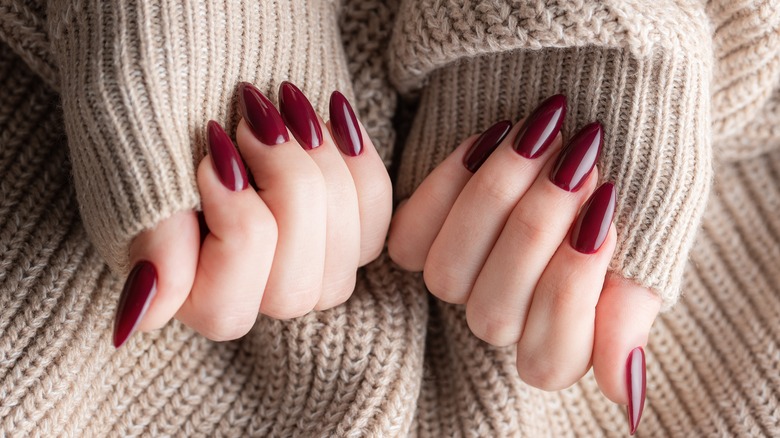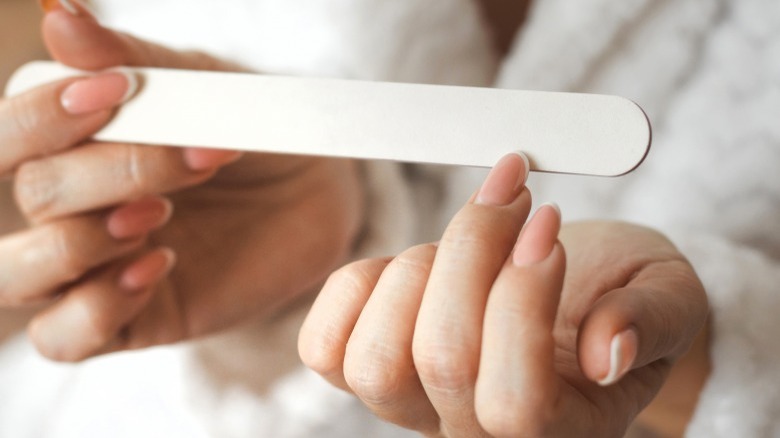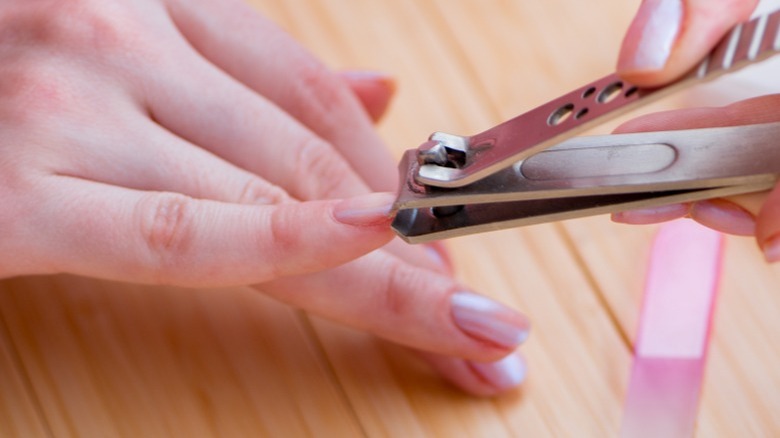Expert DIY Advice For Adjusting Your Acrylics When They're A Little Too Long
Getting acrylic nails will leave you feeling quite stylish and put-together. Fast forward to a few weeks later, though, and your beautiful acrylics are starting to feel less like fabulous fashion statements and more like unsightly talons.
Taking care of acrylic nails at home is a little more complicated than trimming your real nails. When you have acrylics, you will have to take steps to care for both the acrylic and your growing fingernail underneath. If you want to keep your nails sanitary and attractive without damaging your fancy manicure, you'll need to be prepared to shape and modify your acrylics on your own, along with returning to the salon regularly to fill in the growth space.
To learn more, we spoke with nail expert Marie Littlewood, the director at Nail Systems International (NSI). With nearly three decades of nail and beauty experience under her belt, Littlewood was able to give us the scoop on how to properly maintain and trim your acrylic nails at home.
Maintenance is a must
When it comes to acrylic nails, maintenance is mandatory. To make your acrylics last longer, you will need to regularly touch them up as your nails grow out, not only filing down the excess length but also paying particular attention to the gap where your newly grown real nail begins to show. Filling in the exposed area can add balance and prevent your acrylics from looking too long or overgrown.
Littlewood recommends filling in the empty nail space near your cuticles every 10 to 14 days. Regularly filling in your nails will keep your manicure looking pretty, but it's also an important hygiene habit. As Littlewood explains, "Don't delay too long or moisture could get trapped underneath the nail, causing it to begin to mildew and turn green." Littlewood also notes that the opening at the bottom of your acrylics is a potential breeding ground for yeast and other fungi. If you notice any discoloration on your nails or cuticles, remove the acrylics and get the nail checked out by a doctor.
Use nail clippers
While nail files and other shaping tools can be helpful for maintaining your acrylics, you will sometimes need to use nail clippers. Since acrylics are thicker than regular nails, Littlewood suggests using toenail clippers, which are bigger and will give you more leverage for cutting.
It may take some maneuvering to remove the trimmed acrylic pieces from your nail. "When cutting artificial nails, you should go at an angle to give the tips of your nails a point,'" says Littlewood, also pointing out that acrylics normally don't fall right off, so you will need to gently wiggle the cut sections to coax them off of your natural nail without causing damage.
If the cut pieces refuse to come off, you will need to seek help from a professional. "Cover it with a bandage and visit your nail artist right away if you simply can't seem to break the acrylic nail off or it's beginning to lift excessively," Littlewood recommends. Adjusting your acrylics at home may sound intimidating, but with a sturdy pair of clippers and a good hygiene routine, you can keep your acrylic manicure well-shaped, healthy, and stress-free.


